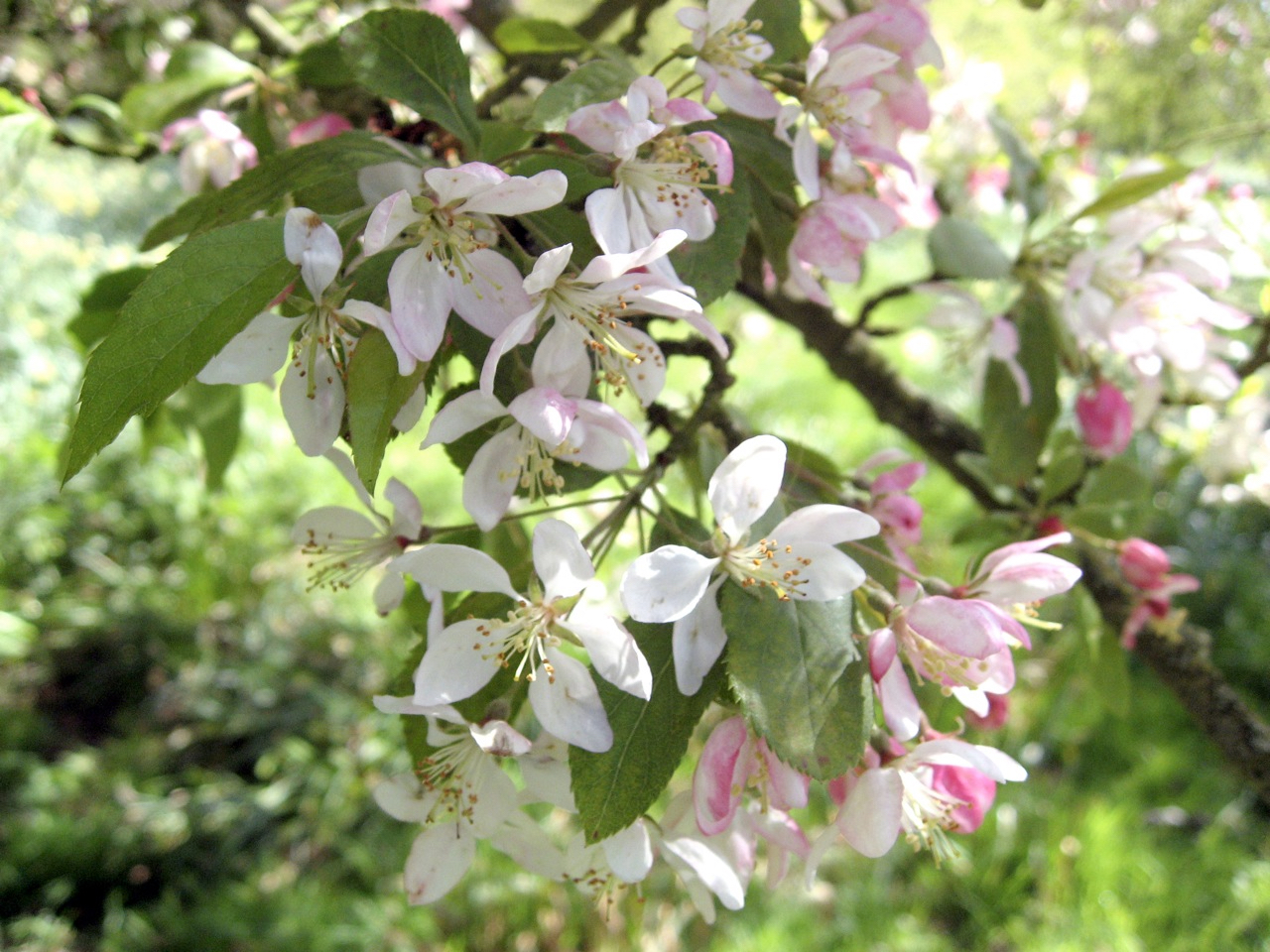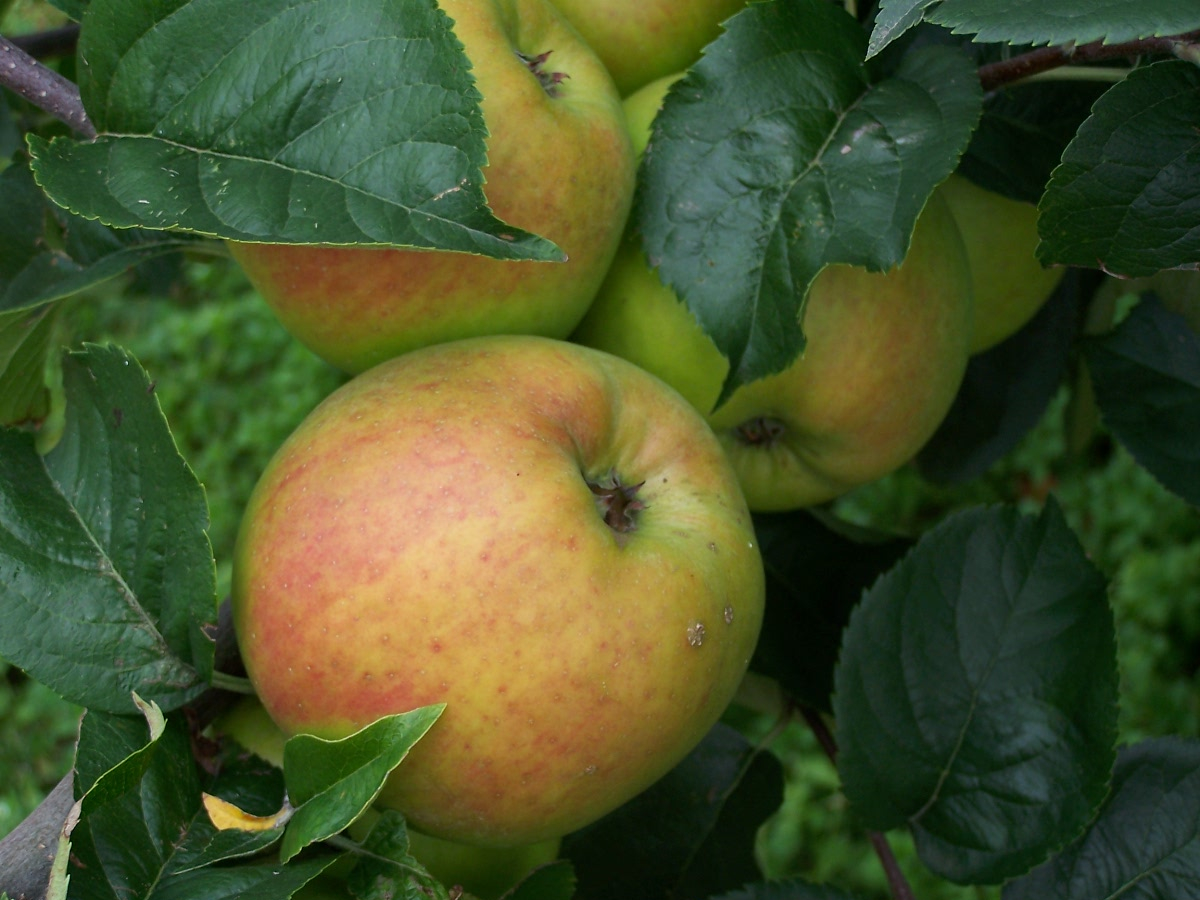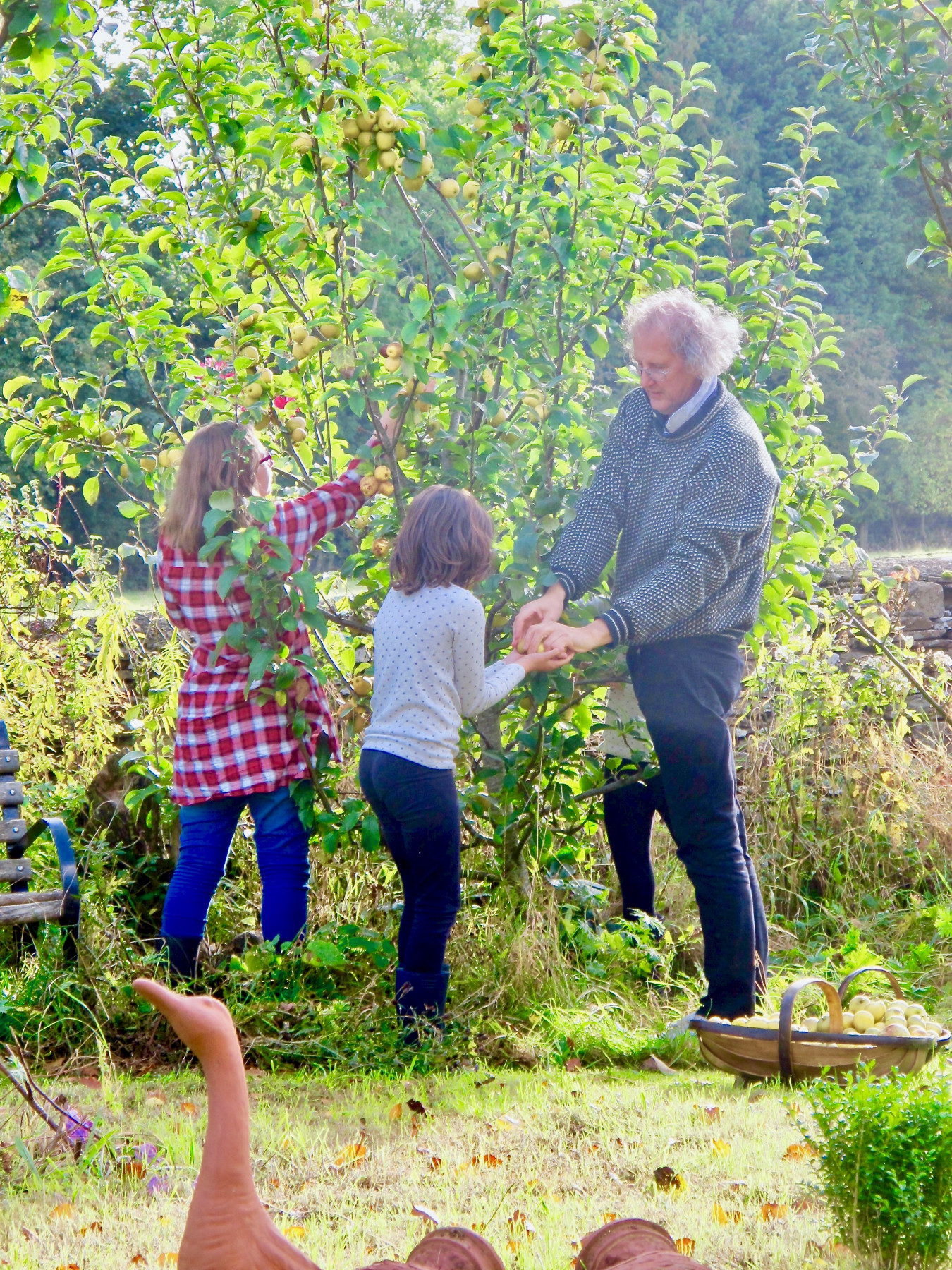
One of the first things I did when I moved to Cold Aston, some fourteen years ago, was to plant five fruit trees. I chose three apples and two pears, but I’ve had far more success with apples than pears. You see, apples cope well with my chilly conditions and we’ve been eating ‘Pitmaston Pine-apple’ and ‘D’Arcy Spice’ apples for the last seven years. They’re both aromatic apples with golden, russet-like skins. ‘Pitmaston Pine-apple’ produces lots of smaller fruits, with a sweet pineapple flavour, so they’re popular with children. ‘D’Arcy Spice’ is a larger apple, but equally delicious.
My third apple, ‘Blenheim Orange’, is a dual-purpose variety that can be cooked or eaten raw. The original seedling was found growing against the boundary wall of Blenheim Park, Woodstock, Oxfordshire, UK by local man called Kempster. He transplanted it in his garden and it became known as ‘Kempster’s Pippin’, until a Worcestershire nurseryman called Biggs obtained permission from the Duke of Marlborough to market the variety as ‘Blenheim Orange’. It went on to win a Banksian Silver Medal in 1820, but it’s not grown commercially now because it’s thin-skinned. It’s my favourite apple, because the sweet flesh has a hint of floral, reminiscent of rose-flavoured Turkish Delight. My ‘Blenheim Orange’ took years to fruit, but it was well-worth waiting for even though it took nine years to produce a decent crop.
We’ve been growing apples for a thousand years or more, but they are not native to Britain. Recent Genetic research, using DNA, has proved that apples began life in the fruit forests of the Tien Shan in central Asia. Initially seeds were spread by bears and birds, but travellers and their pack animals using the Silk Road also ate the fruit eventually spread the seeds beyond their native region. There’s a fascinating book by Barry Juniper and David J. Mabberley, called The Story of the Apple which was published by Timber Press in 2006. Copies are rather rare and expensive.
The pear has also been eaten for a thousand years or more, but this comes from warmer parts of Continental Europe and Iran. They were first written about in Britain following the Norman Conquest, but they are thought to have been grown in the Dark Ages. They were almost certainly introduced by monastic orders linked to France, probably the Cistercians. These monks travelled back to France on a regular basis and they would have brought scion wood back with them. The Cistercians developed the gritty Warden Pear at Warden Abbey in Bedfordshire, a religious institution founded in 1136. The Book of Pears by Joan Morgan, published by the RHS in 2015, still available and cheaper than when it was published, is a fascinating read.

Edible pears are almost certainly hybrids of Pyrus communis, a European species not native to Britain. The early pre-18th century varieties had a grittier texture rather than the buttery texture we prefer today. We know that a number of pear varieties were planted by Richard Harris, fruiterer to King Henry VIII, at Teynham in Kent in an area known as The King’s Orchards. Teynham also boasted the first cherry orchard and fruit is still grown there today, under the King’s Orchard label.
The cold winters and warm springs of Kent produce abundant fruiting spurs on pears and cherries. Both need warm springs. Pears
flower early so they’re susceptible to frost damage. Once pollinated, they need warm temperatures to develop their pollen tubes. As a result pears were usually were usually grown against south-facing or west-facing walls in colder districts.
The first deliberate breeding was carried out by Abbé Nicholas Hardenpont in Mons in Belgium in the early years of the 17th century. ‘Glou Morceau’ ( raised in 1750 but only available from 1820) is one of his varieties and it translates as ‘delicious morsel’. I planted ‘Glou Morceau’ to complement and cross fertilise the most popular culinary pear of all, ‘ ‘Doyenné du Comice’ . This was raised in 1849 in France and introduced into Britain by Sir Thomas Dyke Acland in 1858. It’s picked at the same time as ‘Glou Morceau’ but this grainy pear is usually cooked. Both have struggled in Cold Aston, although I’m leaving them for the moment in case they revive. If not, I might get prosectuted for cruelty to pears.
British pears were being bred by the mid-19th century. The most famous breeders were Rivers of Sawbridgeworth who named a slender eating pear ‘Conference’ to commemorate The National British Pear Conference of 1885. The modern, compact pear ‘Concorde’ ( raised at East Malling in Kent in 1977 ) is a cross between ‘Conference’ and Doyenne ACUTE du Comice’ and it is highly regarded. ‘Conference’ and ‘Concorde’ are both recommended for colder districts. Now they tell me!

The most popular international pear was a chance seedling that grew in the garden of a schoolmaster, one Mr Wheeler, in Aldermaston in Berkshire c. 1770. Cuttings were eventually passed to nurseryman Richard Williams of Turnham Green and the ‘Williams Bon Chretien’
Pear was christened. However scion wood had been already exported to America and grown on land owned by Enoch Bartlett. In 1817 he christened the variety ‘Bartlett’. These Bartlett/ Williams pears are often tinned and California produces tons for the trade.
If you’re buying a pear, they enjoy that well-known gardening oxymoron ‘moist yet well-drained soil’. They’re grafted on thirsty quince rootstocks – either Quince A or Quince C. Quince A is more resistant to frost and produces a crop when the tree is younger. Quince C produces smaller trees. Consult a fruit tree specialist such as Keepers Nursery – www.keepers-nursery.co.uk .



